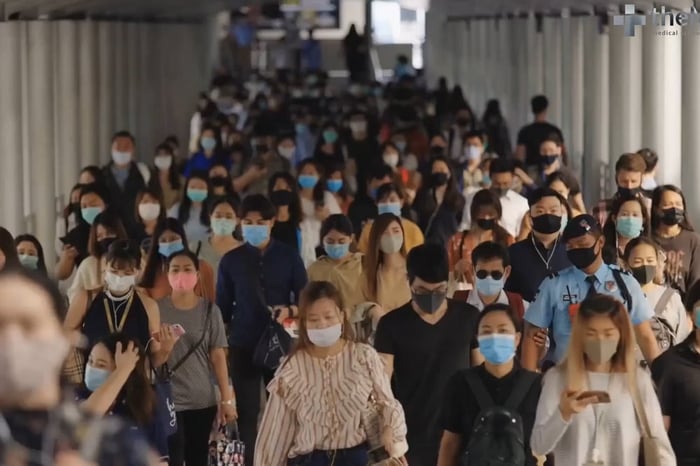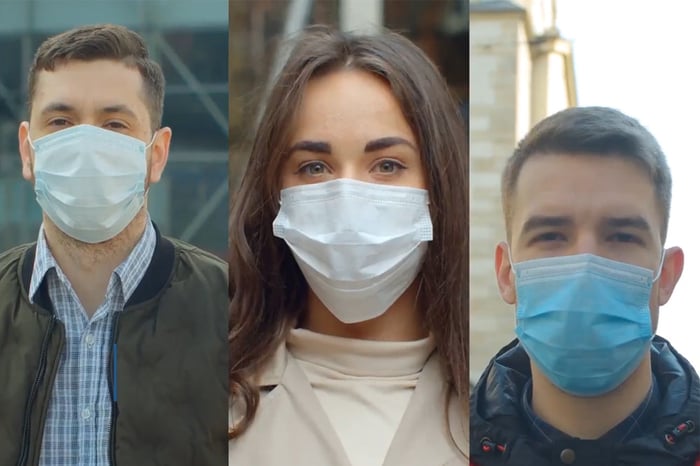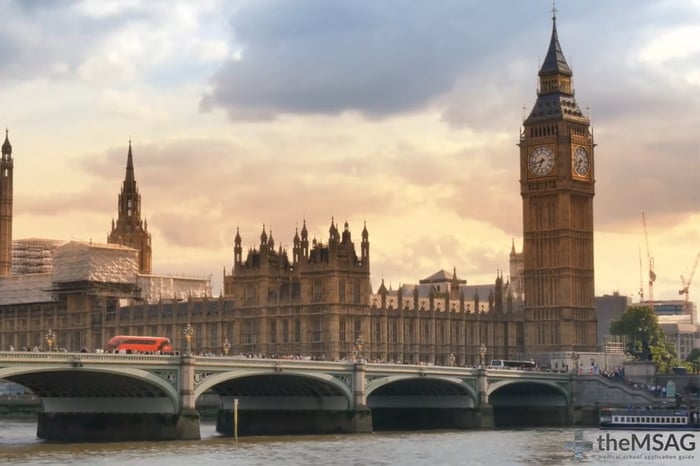
COVID-19 - Pro-Lockdown
The COVID-19 pandemic has brought unprecedented challenges to governments across the world and many contrasting viewpoints exist on how the pandemic has been handled. Various restrictive measures such as curfews and quarantines have been introduced in many countries as a means to reduce the transmission of COVID-19.
According to a EuroNews report, around half of the world’s total population was under lockdown in April 2020. With lockdown measures affecting nearly four billion people in more than ninety countries, there is bound to be debate regarding the best way to navigate through the pandemic.
Interviewers will often ask for your opinion on topical subjects; but before you express your personal views, they are interested to find out if you can appreciate and discuss both sides of the argument. In this argument some believe that safety should be the utmost priority and that the spread of the virus should be stopped by all means necessary. The contrasting viewpoint is that freedom, the right of movement and the right to work, should be prioritised. For more guidance on how to approach and structure interview questions why not try our free online self-study interview course.
In this blog we will discuss the following arguments in favour of implementing lockdowns:
- Transmission Rate
- Fatality Rate
- Lockdown Success
- The Moral Argument
- Intensive Care Capacity
- The difficulty in enforcing other measures
Transmission rate
The first argument in favour of prioritizing restrictive measures is that the transmission rate of COVID-19 is high. In public health, the transmission rate is measured using something called the reproduction number, or R number. This is the average number of people infected by a person with the virus. If the R number is greater than 1, an epidemic is in general seen to be growing, if the R number is less than 1 then an epidemic is shrinking.
According to the European Centre for Disease Prevention and Control, at the height of the pandemic one person infected with COVID-19 would on average infect between two and three other people. This means the R number was 3. With measures to reduce the spread that number has reduced to between 0.7-1 in the UK. For comparison a typical influenza virus, also known as the flu virus, has an R number of 1.3. This means that the average person who has the common flu will infect 1.3 other people.
A new variant of COVID-19 was identified in the United Kingdom, predominantly in the South and East of England. This variant includes a mutation in the ‘spike’ protein. Changes in this part of the spike protein may result in the virus becoming more infectious and spreading more easily between people. The UK Prime Minister, Boris Johnson, said that this new strain is up to 70% more transmissible. As this variant was only first discovered at very low levels in September 2020, there is limited reliable data available. If we look at data from the UK government on the number of daily positive COVID-19 cases from September 2020 until mid-December 2020, you can see that daily cases have increased significantly. This new variant is partly responsible for this increase. One could argue that safety should be prioritized to stop this new strain of COVID-19 spreading throughout the UK and the rest of the world.
What about medicines? Can’t they be used to reduce the transmission rate? There are no medications to prevent people from catching COVID-19. Vaccines have been developed, but it will take a long time to effectively vaccinate an entire population. Therefore, it can be argued that non-pharmacological methods should be employed to stop the spread of the virus. This includes options such as strict hygiene measures, isolating positive cases and their contacts, physical distancing and lockdowns with bans on public gatherings and travel, and the closure of businesses and schools.
Fatality rate
The second argument in favour of prioritizing restrictions is that the mortality rate of COVID-19 is higher than that of other common infectious diseases such as the seasonal flu. The fatality rate is the proportion of people who die from a specified disease out of all the individuals diagnosed with it, over a certain period of time.
The fatality rate of COVID-19 is difficult to assess. The World Health Organization estimates the global crude mortality rate to be between 3-4%. The real mortality rate is likely to be lower as this number does not take into account asymptomatic cases i.e. those individuals infected with COVID-19 who did not take a diagnostic test, or those who had a false negative test result. Despite this the mortality rate is still thought to be much higher than common influenza which has an average mortality rate well below 0.1%.
There is currently no cure for COVID-19. Given the fatality rate of COVID-19, many people argue that safety should be prioritised and that lockdowns should be used until we have other tools such as treatments and vaccines readily available.
Lockdown Success
The third argument in favour of prioritizing restrictions is that lockdowns have been shown to be successful. There is evidence demonstrating the effectiveness of lockdowns in data from the 1918 Spanish flu, as well as the COVID-19 pandemic.
In 1918, the world faced another pandemic called “the Spanish flu” which infected 500 million people with an estimated death toll of between 17- 50 million people. Why is this relevant to the COVID-19 pandemic which happened more than one hundred years later?
Historical data, analysed from forty-three cities in the United States during the 1918-19 Spanish flu pandemic, showed strong evidence that lockdowns reduce death rates as well as the total number of deaths. As historical data shows us that lockdowns may be one of the most effective tools that we have in preventing the spread of COVID-19, you can argue that they should be used until we have a better alternative.
Information from coronavirus.data.gov.uk
Current data also supports this theory. In the UK, COVID-19 cases rose rapidly in March 2020. As a result the UK government implemented its first national lockdown on the 26th March. Following this the number of daily cases of COVID-19 plateaued and then decreased. The Health Foundation reported that countries which were more stringent in taking steps to slow transmission generally had lower death rates. This is further recent evidence in favour of the effectiveness of lockdowns.
The Moral Argument
The fourth argument in favour of prioritising safety and lockdown is that it is the morally correct thing to do. COVID-19 can affect anyone, but it is more likely to cause severe illness or death in certain groups of people. These groups include those over the age of 60, and patients with medical comorbidities such as diabetes, high blood pressure, cancer, obesity and heart/lung disease.
You can argue that as a caring society we should do everything that we can to protect the most vulnerable, even if this means that the rest of us must sacrifice some of our usual freedoms.
Intensive Care Capacity
The fifth argument in favour of restrictions is that there is a limited number of intensive care unit beds. It is important to ensure that we do not have more people that need ICU than hospitals can accommodate. An ICU ward has highly skilled staff and specialist equipment; it is an environment that cannot be replicated in a typical hospital ward. If a patient with a severe case of COVID-19 cannot access this high level of support because the ICU is full, they are at risk of death, which could otherwise be preventable within the correct hospital setting.
When the pandemic began, there were concerns that hospital admissions for COVID-19 would overwhelm hospital capacity, resulting in many preventable deaths. There were two responses to this concern. The first was to establish additional capacity. In the UK, the NHS built the Nightingale Hospitals: purpose-built field hospitals intended to treat critical care patients. The second response was an attempt to slow the spread of the COVID-19 virus by implementing lockdowns in order to decrease the growth of cases and reduce the burden on health services.
The difficulty in enforcing other measures
Another argument in favour of national lockdowns is that other measures to prevent the spread of COVID-19 are hard to enforce.It is easier to implement measures that are clearly defined and apply to everyone.
Imagine that instead of a lockdown the rules were that each person is allowed to go out once per week or for 30 minutes each day. This would be a method of reducing contact between individuals without a total lockdown. Peru implemented a gender based lockdown. The rules were as follows: men could only leave home on Mondays, Wednesdays and Fridays and women could only leave on Tuesdays, Thursdays and Saturdays. On Sundays, no-one was allowed out. Unfortunately, this created massive issues for people who do not identify as male or female. Even if you used a different categorisation like age or house number, you still have the difficulty of enforcement. How would the police know who is allowed out or not?
Other measures such as social distancing are also less likely to be followed. An example of this was in summer 2020 in the UK. The UK government had relaxed the national lockdown and had implemented social distancing rules. Although most people did follow the rules, many did not. The news shared lots of footage of beaches packed with people failing to follow the rules designed to protect them.
Conclusion
In summary, we have discussed several arguments in favour of stricter measures such as lockdowns and social distancing as a response to the COVID 19 pandemic. You may not agree with these arguments but it is important that you are aware of them. In your interviews it is crucial that you present a balanced answer when discussing hot topics. Many of the arguments presented here have strong counter arguments from those who feel stricter social distancing is not the solution and we will explore these views in our next blog. To help you gain confidence and experience in discussing topical issues, theMSAG has highly trained tutors who can provide 1-on-1 medical school interview coaching. Please click here for more information.




